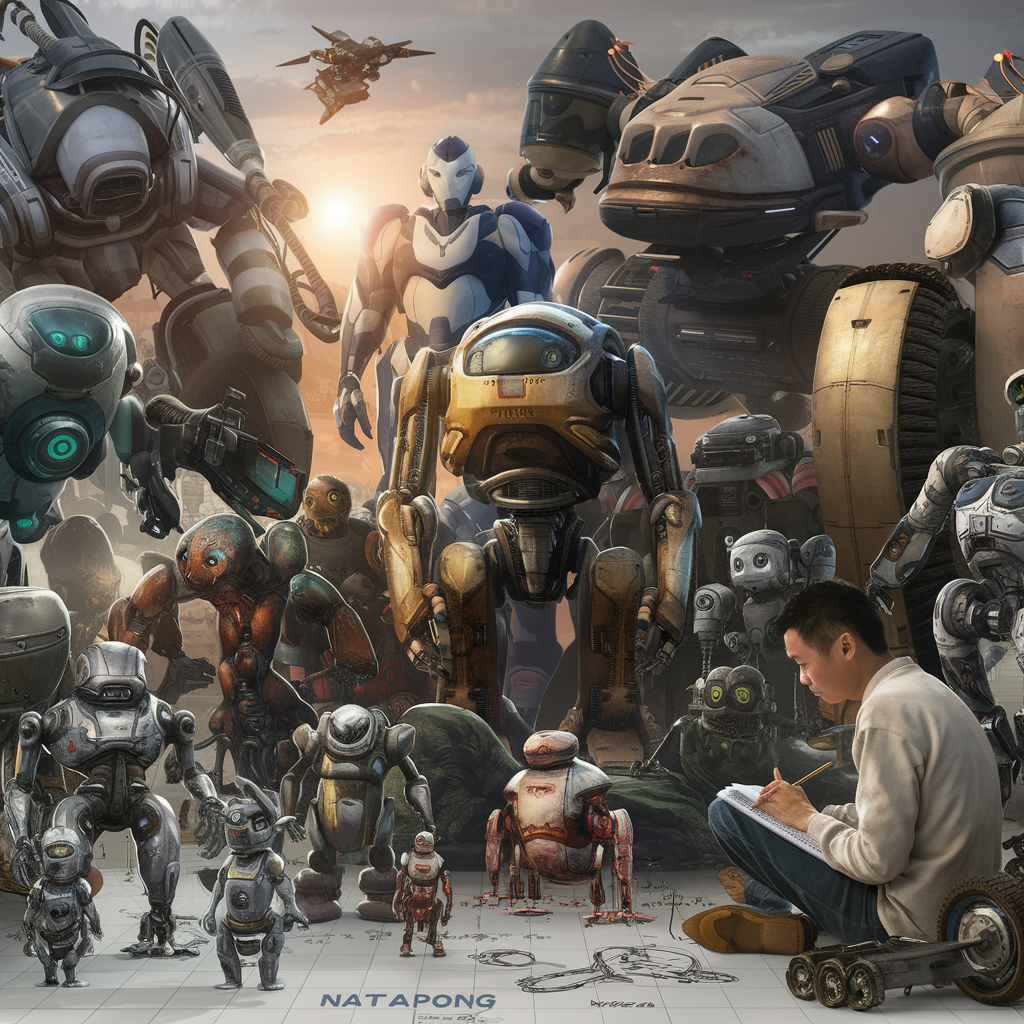Last updated on October 5th, 2024 at 02:12 pm
Welcome to “Robots Dot to Dot Nattapong,” an exciting interactive robotics project that brings the timeless fun of dot-to-dot puzzles into the modern age of robotics and AI.Are you fascinated by the blend of technology and creativity?
In this article, we will explore how robotics can transform traditional puzzles into engaging educational tools and artistic experiences, guiding you through the entire process from concept to creation.
Understanding “Robots Dot to Dot Nattapong”
Concept Explanation
“Robots Dot to Dot Nattapong” is a project that uses robots to draw dot-to-dot puzzles, combining technology with art and education. Inspired by the classic puzzles, this project leverages robotics to create dynamic and interactive experiences. The aim is to demonstrate the capabilities of AI and robotics in a fun and educational manner.
Historical Context
Dot-to-dot puzzles have been enjoyed for centuries, helping children develop fine motor skills and numerical order recognition. With advancements in technology, these puzzles have evolved, integrating digital platforms and now, robotics. Robotics in interactive art and puzzles is a growing field, showcasing the creative potential of AI.
Key Features
The project features a robot equipped with sensors and motors that follow programmed paths to connect dots on a grid. Utilizing microcontrollers, the robot can precisely control its movements, ensuring accurate connections between dots. Advanced algorithms allow the robot to adapt to different puzzle patterns and sizes, enhancing its versatility.
Technical Breakdown
Hardware Components

The project uses key hardware components such as microcontrollers (e.g., Arduino or Raspberry Pi), sensors, and motors. Each component is chosen for its reliability and compatibility with the overall system. The microcontroller acts as the brain, coordinating inputs from sensors and controlling the motors.
Software Components
The software architecture includes a main control program written in languages like Python or C++. Essential libraries for robotics, such as ROS (Robot Operating System), are utilized. Algorithms for pathfinding and movement control are integrated to enable precise drawing.
Integration of Hardware and Software

The hardware and software components interact seamlessly to perform the task. Sensors detect the position of the robot, sending data to the microcontroller. The microcontroller processes this data and adjusts the motors’ movements accordingly.
Building the Project
Step-by-Step Guide
Start by gathering all necessary materials, including the microcontroller, sensors, motors, and building a base for the robot. Follow the assembly instructions, ensuring each component is securely attached. Use diagrams to visualize each step and avoid common pitfalls.
Coding the Project

Begin by writing the control program, using Python or C++. Include code snippets for key functions like movement control and sensor data processing. Troubleshoot common issues, such as sensor calibration and motor alignment.
Testing and Calibration
Test the robot in a controlled environment to ensure all components function correctly. Calibrate the sensors to accurately detect positions and movements. Adjust motor settings to achieve smooth and precise connections between dots.
Applications and Use Cases
Educational Uses

The project can be used in classrooms to teach students about robotics and coding. It helps develop critical thinking and problem-solving skills. Provides a hands-on learning experience that makes STEM education engaging.
Entertainment and Art

Applications extend to interactive art exhibits where robots create dot-to-dot artworks. Can be used in entertainment settings to engage audiences with technology. Demonstrates the fusion of art and robotics, inspiring new forms of creative expression.
Future Prospects
Future developments could include more complex algorithms and AI integration. Enhancements could allow for more intricate and varied puzzles. Expansion into other forms of interactive art and educational tools is possible.
Expert Opinions and Insights
Interviews with Experts
Quotes from robotics and AI experts on the significance of the project. Their perspectives on the future of such projects in education and art. Insights into the technical challenges and innovations involved.
Community Contributions
Highlight contributions from the tech community, such as code improvements and design tweaks. Showcase notable modifications and their impact on the project’s functionality. Encourage readers to contribute their ideas and improvements.
Resources and Further Reading
Reference Materials
List books, articles, and papers on related topics. Provide links to online courses and tutorials for further learning. Recommend additional resources for deepening knowledge in robotics and AI.
Tools and Platforms
Recommend software tools and platforms useful for similar projects. List websites and forums where readers can find support and share their projects. Encourage engagement with the broader robotics community.
FAQs
What is “Robots Dot to Dot Nattapong”?
“Robots Dot to Dot Nattapong” is an interactive robotics project that uses robots to create dot-to-dot puzzles. This project merges traditional puzzle-solving with modern robotics and AI to provide an engaging and educational experience.
What are the key components needed to build the “Robots Dot to Dot Nattapong” project?
The project requires key components such as microcontrollers (e.g., Arduino or Raspberry Pi), sensors, motors, and a base for the robot. Additionally, you will need software tools for programming and integrating these components.
What programming languages are used in this project?
The project primarily uses programming languages such as Python or C++. These languages are used to write the control program and integrate various robotics libraries and algorithms.
How does the robot know where to move and connect the dots?
The robot uses sensors to detect its position and a microcontroller to process this data. It follows programmed paths and uses algorithms to precisely control its movements, ensuring accurate connections between dots.
Can this project be used for educational purposes?
Yes, “Robots Dot to Dot Nattapong” is an excellent educational tool. It can be used in classrooms to teach students about robotics, coding, and the integration of technology with creative projects. It helps develop critical thinking and problem-solving skills.
What are some potential applications of this project outside of education?
Beyond education, the project can be used in interactive art exhibits, entertainment settings, and as a demonstration of the fusion of art and technology. It showcases the creative potential of robotics and AI in various fields.
What challenges might one face when building this project?
Common challenges include calibrating sensors for accurate position detection, ensuring precise motor control, integrating hardware and software components seamlessly, and troubleshooting coding issues.
How can the project be enhanced or expanded in the future?
Future enhancements could include more complex algorithms, AI integration for more intricate puzzles, and expanding into other forms of interactive art and educational tools. Community contributions and innovations can also drive further improvements.
Final Thoughts
Exploring “Robots Dot to Dot Nattapong” has been an exciting journey into the fusion of technology and art. This project showcases the incredible potential of robotics to create interactive and educational experiences that are both fun and informative. By working on this project, you not only enhance your skills in coding and engineering but also contribute to the growing field of interactive robotics. The blend of AI with traditional puzzles opens up new avenues for creative expression and learning. We hope this project inspires you to continue innovating and exploring the limitless possibilities at the intersection of technology and creativity.
Invite readers to comment, share, and engage with the content. Provide links to social media or community forums for further discussion.

I’m Matthew Porter, the creative mind behind “Acknowledgment Templates.” I’ve had a blast creating templates that capture the essence of gratitude in acknowledgment sections. At Acknowledgment Templates, we’re all about turning appreciation into a well-crafted art. Let’s make your acknowledgment section a masterpiece—join me in the creative process at Acknowledgment Templates!




